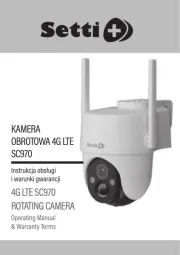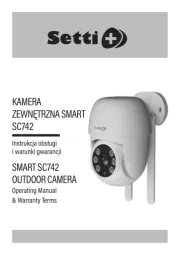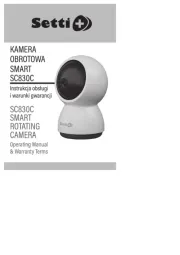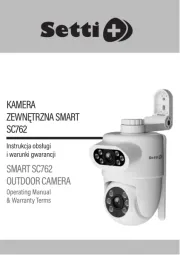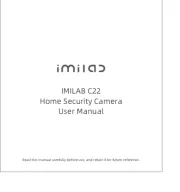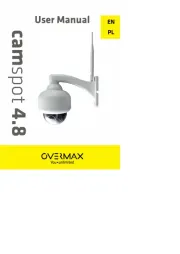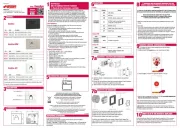Olympus PEN E-PM2 Manual
Læs gratis den danske manual til Olympus PEN E-PM2 (133 sider) i kategorien Kamera. Denne vejledning er vurderet som hjælpsom af 11 personer og har en gennemsnitlig bedømmelse på 4.5 stjerner ud af 6 anmeldelser.
Har du et spørgsmål om Olympus PEN E-PM2, eller vil du spørge andre brugere om produktet?

Produkt Specifikationer
| Mærke: | Olympus |
| Kategori: | Kamera |
| Model: | PEN E-PM2 |
| Bredde: | 109 mm |
| Dybde: | 33.8 mm |
| Højde: | 64.2 mm |
| Vægt: | 233 g |
| Produktfarve: | Rød |
| Vægt (inkl. batteri): | 269 g |
| Skærm diagonal: | 3 " |
| Berøringsskærm: | Ja |
| Kompatible hukommelseskort: | SD,SDHC,SDXC |
| Bluetooth: | Ja |
| Batteriteknologi: | Lithium-Ion (Li-Ion) |
| HD-type: | Fuld HD |
| 3D: | Ja |
| Opbevaringstemperatur (T-T): | -20 - 60 °C |
| Relativ luftfugtighed ved drift (H-H): | 30 - 90 % |
| Relativ luftfugtighed ved opbevaring (H-H): | 10 - 90 % |
| Format til analogt signal: | NTSC,PAL |
| Antal HDMI-porte: | 1 |
| OSD-sprog: | CZE,DAN,DEU,DUT,ENG,ESP,EST,FIN,FRE,GRE,HUN,ITA,LAV,LIT,NOR,POL,POR,RUS,SER,SLK,SLV,SWE,TUR,UKR |
| Understøttede videoformater: | AVI,H.264,M-JPEG,MPEG4 |
| Understøttede lydformater: | PCM |
| Driftstemperatur (T-T): | 0 - 40 °C |
| Skærm: | LCD |
| Intern hukommelse: | - MB |
| Understøttede billedformater: | 3:2,3:4,4:3,16:9 |
| Strømkilde type: | Batteri |
| HDMI: | Ja |
| Videooptagelse: | Ja |
| Batteritype: | BLS-5 |
| USB version: | 2.0 |
| Indbygget mikrofon: | Ja |
| Hvidbalance: | Auto,Fluorescent,Manual,Shade,Sunny,Tungsten,Underwater |
| Scenetilstande: | Beach,Candlelight,Children,Close-up (macro),Documents,Fireworks,Night,Night portrait,Panorama,Portrait,Snow,Sports,Sunset,Landscape (scenery) |
| Fotoeffekter: | Art,Black&White,Muted,Sepia,Vivid |
| Selvudløserens forsinkelse: | 2,12 sek./side |
| Kameraafspilning: | Movie,Single image,Slide show |
| Histogram: | Ja |
| Skærmopløsning (numerisk): | 460000 pixel |
| Synsfelt: | 100 % |
| Vari-angle LCD-skærm: | Ingen |
| Flashtilstande: | Auto,Fill-in,Flash off,Manual,Red-eye reduction,Second curtain synchro,Slow synchronization |
| Flash-synkroniseringshastighed: | 1/250 sek./side |
| Ekstern flash-stik: | Ja |
| Megapixel: | 16.1 MP |
| Kameratype: | MILC |
| Sensortype: | Live MOS |
| Maksimal billedopløsning: | 4608 x 3456 pixel |
| Opløsning på stillbillede(r): | 1024 x 768, 2560 x 1920 |
| Billedstabilisator: | Ja |
| Billede sensor størrelse: | 4/3 " |
| Samlet antal megapixels: | 17.2 MP |
| Billedsensor størrelse (BxDxH): | 17.3 x 13 mm |
| Maksimal videoopløsning: | 1920 x 1080 pixel |
| Videoopløsninger: | 640 x 480,1280 x 720,1920 x 1080 pixel |
| Bevægelse JPEG-billedhastighed: | 30 fps |
| Forstørrelse: | 5 x |
| HDMI- stiktype: | mikro |
| Grænseflade til montering af objektiv: | Mikro Four Thirds (MFT) |
| Optisk zoom: | - x |
| Digital zoom: | - x |
| Autofokus (AF) tilstande: | Autofokus kontinuerlig |
| Autofokus (AF) punkter: | 35 |
| Lyseksponeringstilstande: | Aperture priority AE,Auto,Manual,Shutter priority AE |
| Korrektion af lyseksponering: | ± 3EV (1/3EV step) |
| Lysmåling: | Centre-weighted,Spot |
| Automatisk eksponering (AE) lås: | Ja |
| ISO-følsomhed (min.): | 200 |
| ISO-følsomhed (maks.): | 25600 |
| Hurtigste hastighed for kameralukker: | 1/4000 sek./side |
| Langsomste hastighed for kameralukker: | 60 sek./side |
| Maksimale blænderåbning tal: | 22 |
| Justering af billedkvalitet: | Contrast,Saturation,Sharpness |
| Multi-objektiv: | Ja |
| Brændviddeområde: | 14 - 42 mm |
| Mindste brændvidde (svarende til 35 mm film): | 28 mm |
| Maksimale brændvidde (svarende til 35 mm film): | 84 mm |
| ISO-følsomhed: | 200,400,800,1600,3200,6400,12800,25600,Auto |
| Indbygget flash: | Ja |
| Billedredigering: | Resizing,Trimming |
| Kamerafilsystem: | DCF 2.0,DPOF 1.1,Exif 2.2 |
| Objektivstruktur (elementer/grupper): | 8/7 |
| Filterstørrelse: | 37 mm |
| Antal membranblade: | 7 |
| Autofokus (AF) hjælpestråle: | Ja |
| Realtidsvisning: | Ja |
| Mindste blænderåbnimg tal: | 3.5 |
| Antal asfæriske elementer: | 3 |
| Autofokus (AF) lås: | Ja |
| Ansigtssporing: | Ja |
| Flash ledetal: | 10 m |
Har du brug for hjælp?
Hvis du har brug for hjælp til Olympus PEN E-PM2 stil et spørgsmål nedenfor, og andre brugere vil svare dig
Kamera Olympus Manualer










Kamera Manualer
- Aplic
- Ikegami
- ARRI
- HOLGA
- General Electric
- Kyocera
- Fluke
- Powerfix
- IMILAB
- Moto Mods (Motorola)
- Oregon Scientific
- Yashica
- Grundig
- Pelco
- Meade
Nyeste Kamera Manualer
